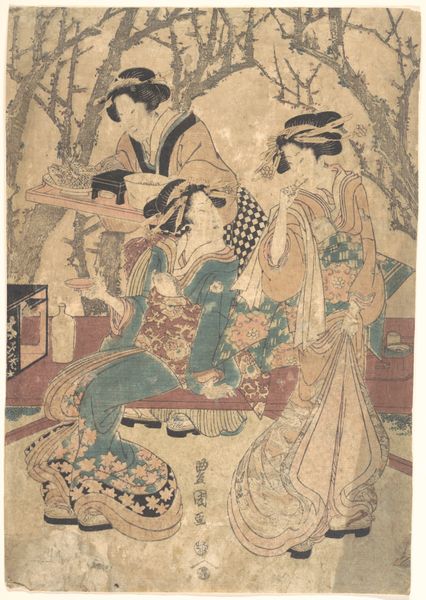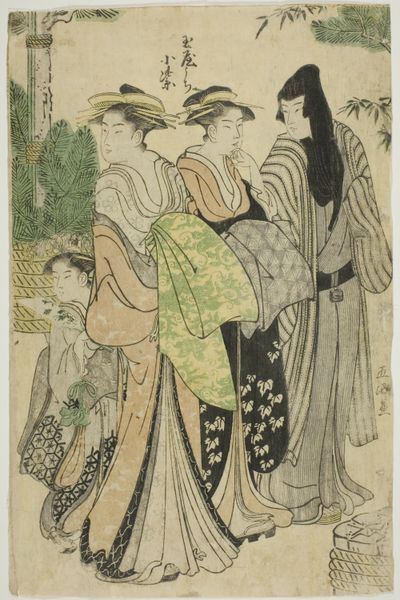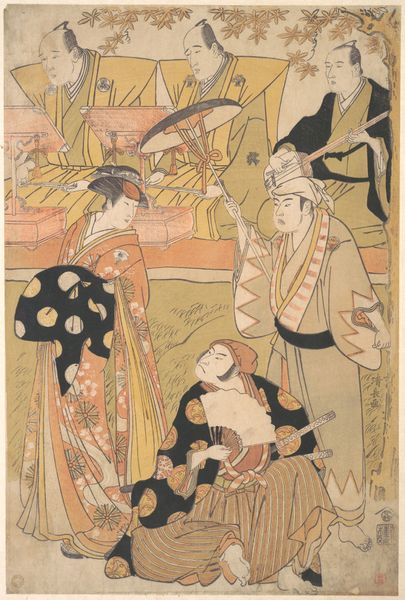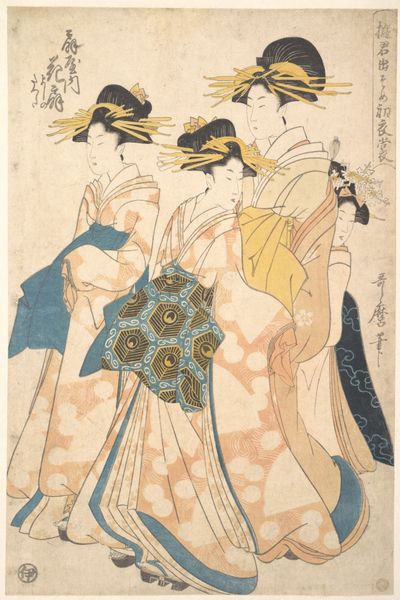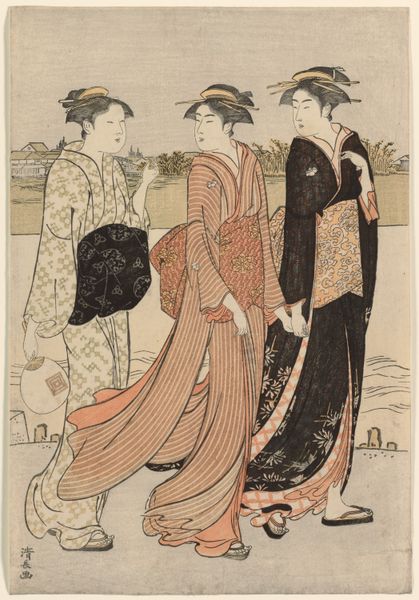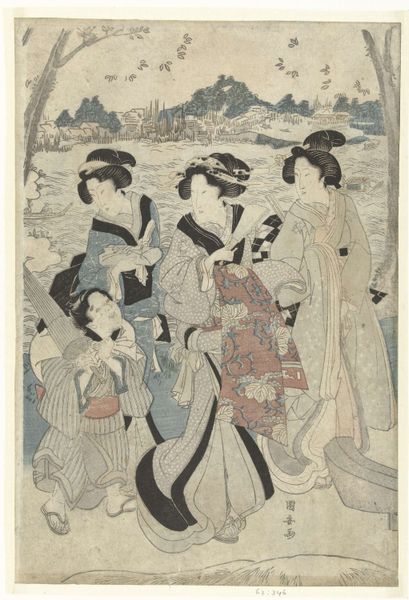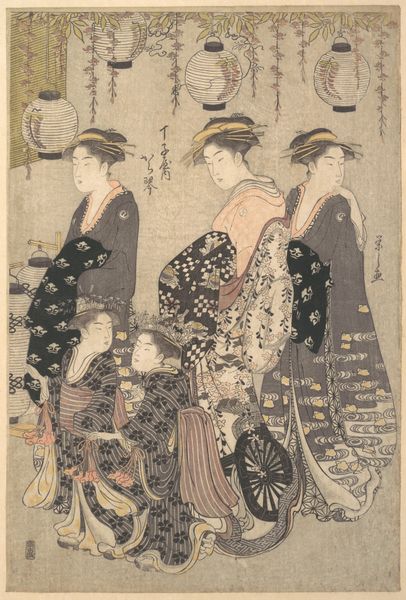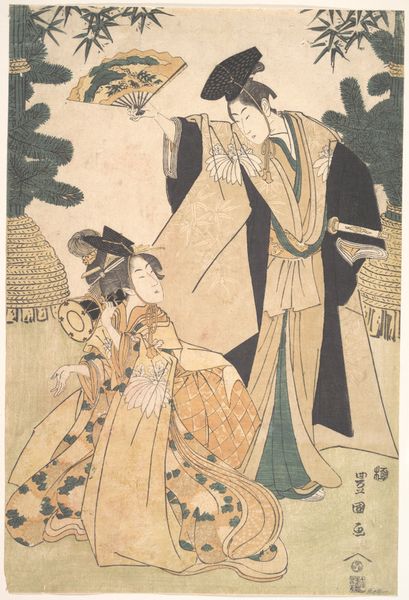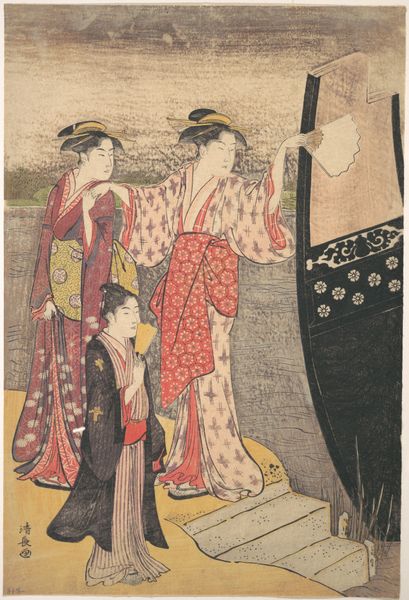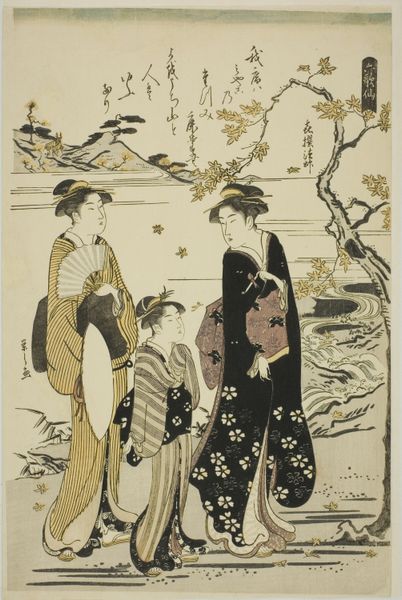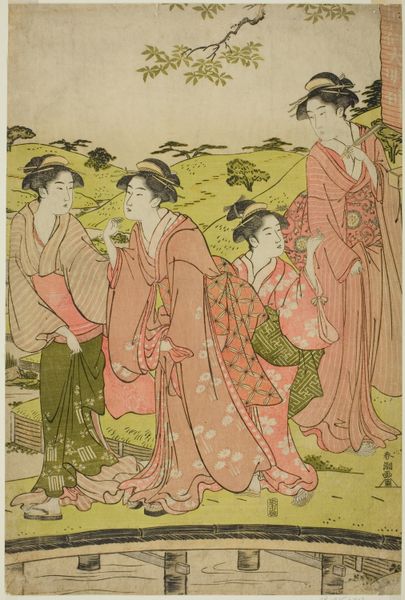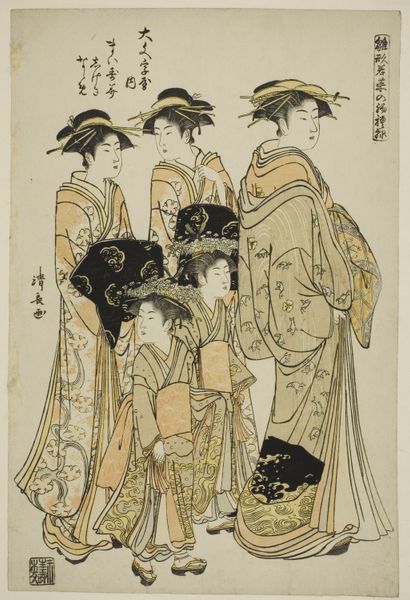
print, woodblock-print
#
portrait
#
ink painting
# print
#
asian-art
#
ukiyo-e
#
woodblock-print
#
genre-painting
Dimensions: 10 1/4 x 14 5/8 in. (26 x 37.1 cm)
Copyright: Public Domain
Editor: So, this is Utagawa Toyokuni I's "Four Women Passing a Group of Trees," created sometime between 1769 and 1825. It’s a woodblock print, and it gives me a real sense of observing a fleeting, intimate moment. What catches your eye when you look at it? Curator: I am immediately drawn to the subtle visual cues and the emotional narratives embedded in the imagery. Look at how the bare branches of the trees frame the women. Trees in Japanese art often symbolize resilience and the cyclical nature of life. Do you notice anything about how their garments speak, not only to the social status of these figures, but also their emotional interiority? Editor: Now that you mention it, there's definitely a contrast in the patterns and colors. Some are vibrant and bold, others are more subdued. I had been taking the colors as decorative. I now understand that the variety within a small group may provide a visual language, speaking to identity. Curator: Precisely! Consider also how the artist uses line and form to capture movement. These aren’t static portraits; they’re figures in transition. And within that transition, we read history; we grasp a sense of the impermanence, *mujō*, that resonates deeply within Buddhist philosophy and Japanese aesthetic sensibilities. Do the poses also signal emotions or relationships between these women? Editor: The way they’re clustered together suggests camaraderie, but each woman has her own distinct posture and gaze, suggesting introspection. Perhaps the artist wished to show interiority in multiple facets. It's so fascinating to see how much can be communicated through subtle gestures and symbolism. Curator: Indeed. Each viewing unravels another layer of meaning. That’s where the enduring power of visual symbols resides. The work, for me, represents cultural continuity and how symbols work, accumulating multiple significations. Editor: This piece now speaks a bit louder! Curator: Precisely the role of symbolism.
Comments
No comments
Be the first to comment and join the conversation on the ultimate creative platform.
